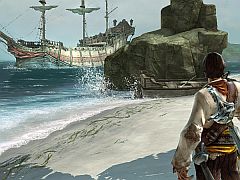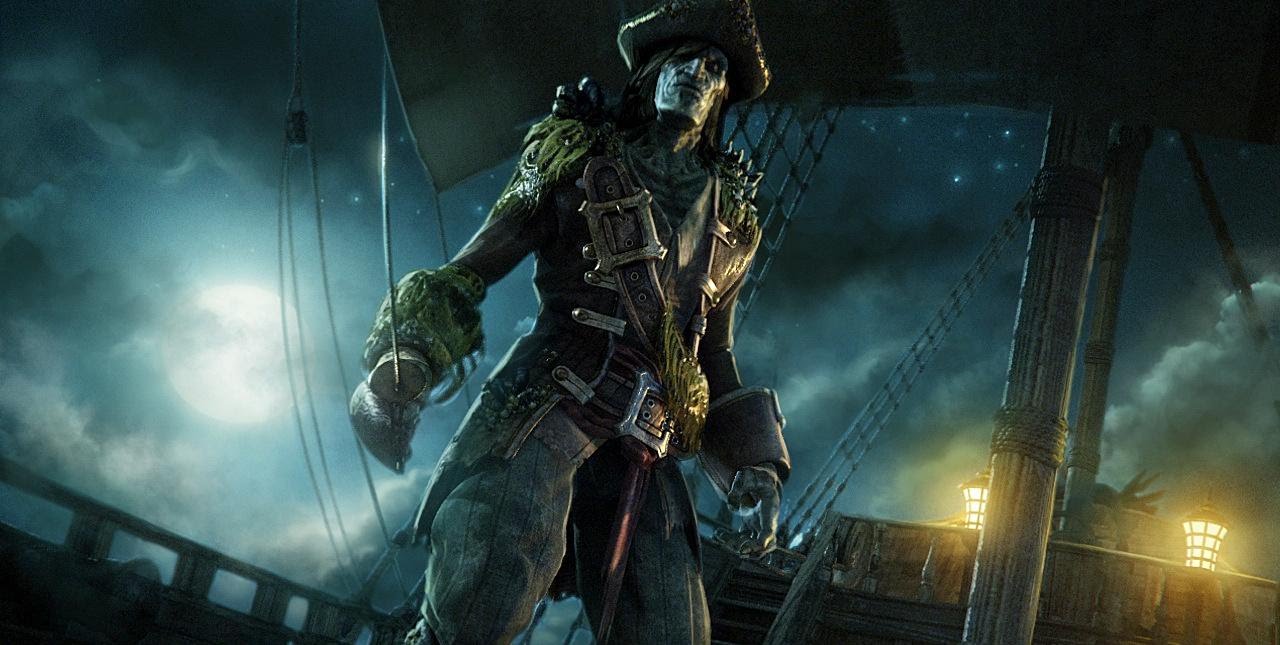You can trust VideoGamer. Our team of gaming experts spend hours testing and reviewing the latest games, to ensure you're reading the most comprehensive guide possible. Rest assured, all imagery and advice is unique and original. Check out how we test and review games here
When I first saw Pirates of the Caribbean on my E3 schedule, I was less than impressed. The license doesn’t grant the game its most celebrated character, Cap’n Jack Sparrow; it’s not based on a particular movie; and features none of the characters from the films. What, I asked myself, is the point? As I meandered over to Disney Interactive’s E3 booth to see the game behind closed doors, all I could think about was the colossal amount of other games I’d rather be playing. Well shame on me for judging a book by its cover, because Armada of the Damned was my guilty pleasure of E3.
Before jumping into the action, Propaganda Games’ Devon Blanchet asked us how we wanted to play the game. You are Captain Sterling, but can choose his personality: a flamboyant swashbuckler known as the Legendary, or a supernatural outcast referred to as the Dreaded. With neither of the journalists sat next to me offering a preference, I requested that the game be shown from the perspective of the Dreaded, which sounded anti-establishment and considerably cooler than the alternative. I was later told that everybody chose the Dreaded option.
Take a look at the screenshots that decorate this preview; remind you of anything? To my eyes, the game owes a great deal to the Fable series in terms of visuals, and Lionhead’s influence extends to gameplay too. I brought up the comparison fairly early on in the demo, to which Devon revealed that the team had actually looked at Fable as a point of reference in making the game. From the stocky character models, to the role playing mechanics, to the morality system, elements of Fable turn up in many areas of the game’s design. I’ll admit that for a while I saw the game as little more than a cheap imitation, but the pirate theme quickly grew on me, and I began to notice a range of unique features that had been added to the formula.
The section of the demo we played took place on an island known as Tarana Oma. The playable area was vast, with clear blue skies encasing an endless sea of lush vegetation. It was just how you’d imagine an island stumbled upon by pirates would look. An impressive draw distance revealed the top of the volcano we were heading for, and I was assured that no loading times would interrupt the journey there. Along the way to this mountain top, primitive island dwellers tried to thwart our advances, apparently afflicted by some kind of curse. This was the first opportunity Captain Sterling had to show off his fighting moves, and he didn’t hesitate in striking the first blow.
The combat system is a real-time hack and slash affair not dissimilar to the aforementioned Fable. There are hints of Devil May Cry and God of War thrown into the mix too, and although I didn’t get to try it out first hand, it was mighty satisfying to watch. Sterling’s anchor blade had an impressive reach, and as he flung it about the screen I was reminded of Kratos and his mighty Blades of Athena. A JRPG-esque damage number accompanied each successful hit, a number that obviously increased based on Sterling’s level and attributes.
As expected, the game allows players to find, trade and equip a large selection of weapons and armour. The customisation features seemed extensive, and we were shown a range of different outfits to accompany both Legendary and Dreaded character types. Fans of the action RPG will be pleasantly impressed by the range and depth of the features on offer, which extend beyond the simple level-based progression seen in the majority of similar games. This is achieved primarily through the Nemesis, the vessel under Sterling’s command, but is also helped along by a familiar, but interesting morality system.
After slaying a giant agitated crab at the top of the volcano, Sterling is presented with an important choice. An ancient idol (presumably what the crab was protecting) could either be stolen, or altered to reflect the image of Sterling. While stealing the plunder would yield greater riches in the short term, leaving the idol where it belongs would have more profound implications in the long run. If Sterling was to return to the island later on in the game, it would offer far greater rewards, and the island’s inhabitants would regard Sterling as some kind of God.
While we didn’t get to see how ships came into play on this particular occasion, Propaganda confirmed that they would play a pivotal role in the game. As the captain of the Nemesis, players can look forward to recruiting a crew, trading with other ships, boarding enemy vessels and waging war on the high seas in large scale ship battles. While you might not have guessed it from the linear demo, Armada of the Damned is very much an open world title. The Caribbean has a plethora of islands open for exploration, and with the mighty Nemesis at your disposal; you’re free to travel between them however you see fit.
Before leaving the presentation I made a point of asking whether the player could look forward to forcing other characters to walk the plank. Propaganda refused to comment on this, which as we all know, probably means yes.
I said previously that Armada of the Damned was my guilty pleasure of E3, but the more I think about it, the less guilty I feel. The game might not be particularly original, but something about it has me genuinely excited. Everything it does it does well, and the prospect of taking to the seas as captain of my very own pirate ship is incredibly alluring. Yes, other games have done the whole pirate thing before, but for me, Armada of the Damned really hits the nail on the head.
Pirates of the Caribbean: Armada of the Damned will be released on Xbox 360, PlayStation 3 and PC in 2011.
Pirates of the Caribbean: Armada of the Damned
- Platform(s): PC, PlayStation 3, Xbox 360
- Genre(s): Action, Adventure, RPG

/https://oimg.videogamer.com/images/bf6f/pirates_of_the_caribbean_armada_of_the_damned_6.jpg)
